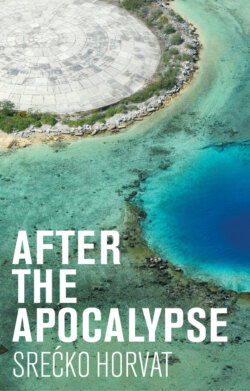Читать книгу After the Apocalypse - Srećko Horvat - Страница 5
Acknowledgements
ОглавлениеTo write a book about the Apocalypse even as it is in the process of unfolding makes an already difficult task even harder. We are all living through it, deeply entangled and personally shaken by its ‘revelations’, engulfed by its warnings and, yet, the attempt to imagine the unimaginable, to grasp the ‘supraliminal’, needs to be taken if we are to understand what is at stake, namely extinction. This book is not only an attempt to bridge these two tensions – overwhelming reality and the reality that is to come – it is, like every book, also a product of these times. I started to write it on the island of Vis, as a sort of continuation of my previous book Poetry from the Future (2019) and its chapter ‘It’s the End of the World (as We Know It)’, and, after various travels to the ‘future of places’ (including Chernobyl), I sent the manuscript to my publisher in late January 2020. As I was awaiting feedback, I heard about a virus in China that would soon change the course of history not only as a dark ‘real existing’ dystopia, but also as a sort of rupture to open new – perhaps emancipatory – possibilities for a world ‘after the Apocalypse’. In the meantime, I was stuck in Vienna during the COVID-19 lockdown until late May 2020 and received a message from my publisher John Thompson and two anonymous reviews of the first draft that easily convinced me, as hard as it was, to rewrite the whole book and to include the ongoing pandemic as an inherent part of the ‘eschatological tipping points’ that are being explored in this book. My deep gratitude goes to John, who published my first book written in English, The Radicality of Love, and who was immediately interested in publishing After the Apocalypse. Thanks to his never-ending patience, valuable comments and a few disagreements, the manuscript turned into its current form. I also want to thank the two anonymous reviewers who forced me to carefully rework some crucial parts of it; Sarah Dancy for the diligent copy-editing; and Julia Davies for her editorial support throughout the whole process.
This book started its life long before the current COVID-19 pandemic and the acceleration of catastrophes throughout the world, including climate crisis, civil wars and the enduring nuclear threat that are turning extinction not into a future event that is yet to come, but into something that might already become history once this book is published. If one day in March 2018 I hadn’t met Tigran Haas in Stockholm, this book would perhaps never be written. I was invited by Tigran to deliver a lecture at the Center for the Future of Places at the KTH Royal Institute of Technology and immediately afterwards he told me I must write a book that would explore the ‘future of places’ in relation to the Apocalypse. Thanks to him and the generous support of the Center for the Future of Places, I decided to dive into this abyss and examine both the spatial and temporal implications of the Apocalypse. Only through numerous thoughts, dreams and fears shared with my fellow travellers, my suputnik(s) or sputnik(s), did this book take its current shape. Perhaps a more precise term would be supatnik (‘fellow sufferer’), as they had to endure my endless obsession with the ‘end’ and the ‘after’. First and foremost, my thanks goes, as always, to Saša Savanović, not only for her critical comments and numerous readings, but also for making the world ‘after the Apocalypse’ a more joyful and hopeful place. Among my fellow travellers, whose list is long and always incomplete, those who especially helped in this endeavour are Franco ‘Bifo’ Berardi, Yanis Varoufakis, Darko Suvin, Boris Buden, Renata Ávila, Judith Meyer, Maja Kantar, Andrej Nikolaidis, Marko Pogačar, Valerio Baćak and Filip Balunović. This book was finished in the midst of a pandemic which, once again, proved that ‘politics of friendship’ is always connected to survival – and resistance.
